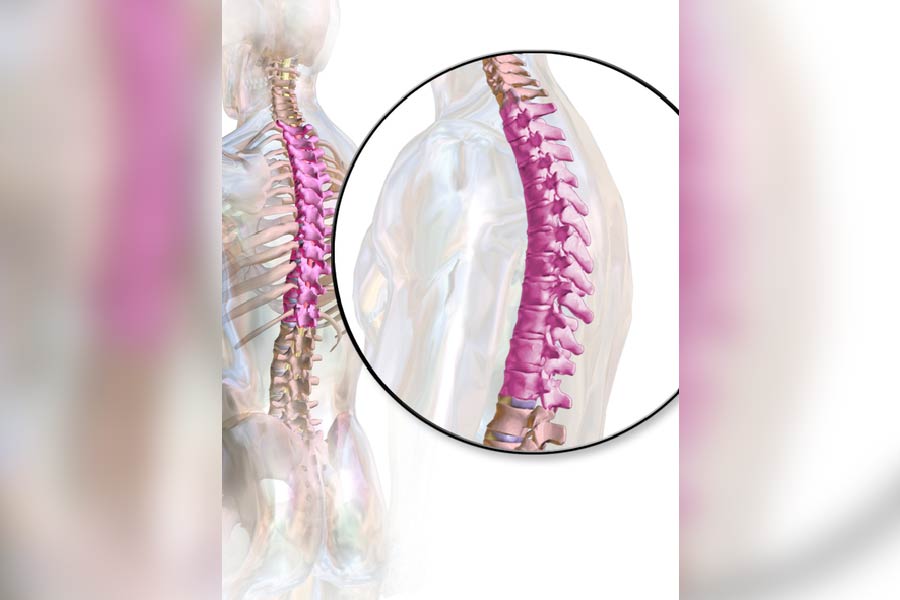
5 Ways to Improve your Thoracic Spine Rotation
The thoracic spine is located in the middle of the back and is responsible for many important movements and functions in the body, including rotation. A lack of thoracic spine mobility can lead to compensations and pain in other areas of the body, such as the neck and lower back. In this article, we will discuss five ways to improve your thoracic spine rotation.
1. Foam Rolling
Foam rolling is a technique used to release tension in the muscles and fascia of the body. By rolling over a foam roller or other self-massage tool, you can increase blood flow and decrease tension in the muscles surrounding the thoracic spine. This can help to improve your mobility and range of motion, making it easier to rotate your spine.
To foam roll your thoracic spine, lie on your back with the foam roller positioned underneath your shoulder blades. Cross your arms over your chest and gently roll up and down the length of your upper back. You can also add in a slight twist to each side as you roll to increase the stretch and promote rotation.
2. Cat-Cow Stretch
The cat-cow stretch is a yoga pose that is great for improving spinal mobility and flexibility. It involves alternating between rounding your spine and arching your spine to create a wave-like motion. This movement can help to mobilize the thoracic spine and improve your ability to rotate.
To perform the cat-cow stretch, start on your hands and knees with your wrists directly under your shoulders and your knees under your hips. Inhale and arch your spine, lifting your tailbone and head towards the ceiling. Exhale and round your spine, tucking your chin towards your chest and bringing your tailbone towards your knees. Repeat this movement for several rounds, focusing on moving through each vertebra of the thoracic spine.
3. Thoracic Extension Mobilization
Thoracic extension mobilization is a manual technique used by physical therapists and chiropractors to increase thoracic spine mobility. It involves using a foam roller or other tool to apply pressure to the thoracic spine while the patient performs an extension movement. This can help to mobilize the joints and decrease stiffness, improving your ability to rotate.
To perform thoracic extension mobilization, lie on your back with a foam roller positioned underneath your thoracic spine. Bend your knees and place your feet flat on the ground. Place your hands behind your head and slowly lift your head and shoulders off the ground, pressing your back into the foam roller. Hold this position for a few seconds, then slowly lower back down. Repeat for several reps, focusing on keeping your elbows wide and your chin tucked.
4. Quadruped Thoracic Rotation
The quadruped thoracic rotation is an exercise that can be used to improve thoracic spine mobility and rotation. It involves rotating the spine while maintaining a stable core, which can help to improve your ability to rotate in daily activities and sports.
To perform the quadruped thoracic rotation, start on your hands and knees with your wrists directly under your shoulders and your knees under your hips. Place one hand behind your head and rotate your spine towards that elbow, keeping your core engaged and your hips stable. Hold for a few seconds, then slowly rotate back to the starting position. Repeat on the other side, alternating for several reps.
5. Open Books
The open books exercise is a great way to improve thoracic spine rotation and mobility while also stretching the chest and shoulders. It can be performed with or without a resistance band, depending on your level of flexibility.
To perform the open books exercise, lie on your side with your knees bent and your arms straight out in front of you. If using a resistance band, loop it around your top knee and hold it with the opposite hand. Rotate your spine towards the opposite arm, bringing the arm across your body and then flat on the floor on your opposite side. Keep your other arm and legs flat on the floor while you do this. Perform this on both sides.
Conclusion
Written by: Dr. Mike Belding
Chiropractor, B.Sc, ART
